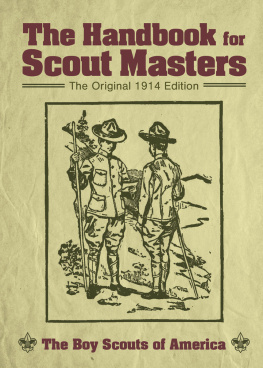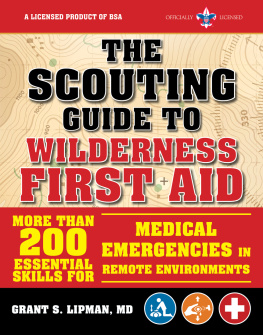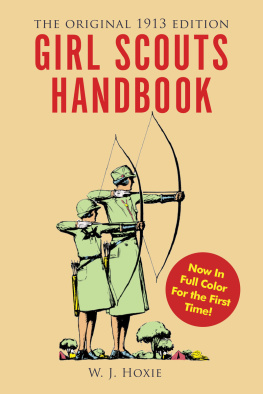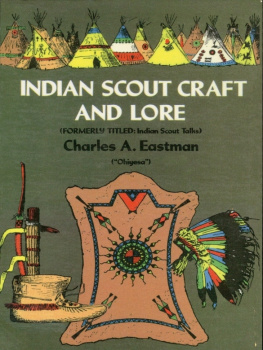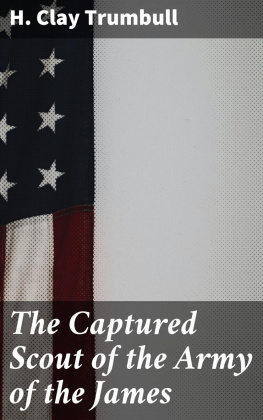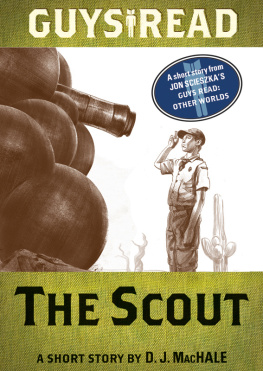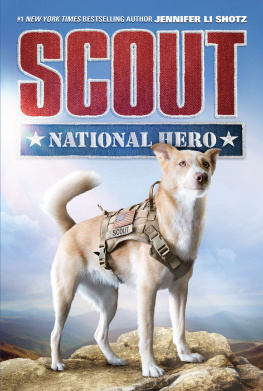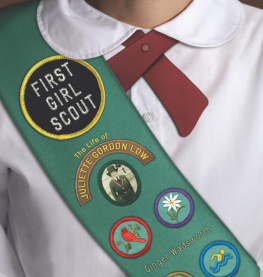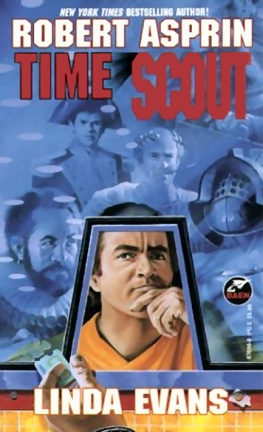

Certain sections of this book that have been deemed as racist and homophobic have been removed. All other text has been printed as it originally appeared in 1914.
Originally published in 1914 under the supervision of the Editorial Board Representing the National Council of the Boy Scouts of America.
First Skyhorse Publishing edition, 2020.
All Rights Reserved. No part of this book may be reproduced in any manner without the express written consent of the publisher, except in the case of brief excerpts in critical reviews or articles. All inquiries should be addressed to Skyhorse Publishing, 307 West 36th Street, 11th Floor, New York, NY 10018.
Skyhorse Publishing books may be purchased in bulk at special discounts for sales promotion, corporate gifts, fund-raising, or educational purposes. Special editions can also be created to specifications. For details, contact the Special Sales Department, Skyhorse Publishing, 307 West 36th Street, 11th Floor, New York, NY 10018 or .
Skyhorse and Skyhorse Publishing are registered trademarks of Skyhorse Publishing, Inc., a Delaware corporation. Visit our website at www.skyhorsepublishing.com.
10 9 8 7 6 5 4 3 2 1
Cover design by Kai Texel
Library of Congress Control Number: 2019954896
Print ISBN: 978-1-5107-5861-2
Ebook ISBN: 978-1-5107-5862-9
Printed in China

INTRODUCTION
In the early summer of 1911 we sent out our Boys Handbook, which was most kindly received. Boys in all parts of the country have found the information of great value. Its use, however, disclosed the need of a supplemental book, the primary purpose of which should be to consider the principles and methods of Boys Work and Scouting, and to show Scout Masters how to use the material in the Boys Handbook. This need was emphasized by the constant calls for information which came from all parts of the country to the office at National Headquarters.
In response to these calls this book was prepared and some thousand of copies in proof form were sent to Scout Masters and others, asking for candid criticism and suggestions as to how it could be made more useful. The response to this request showed a great deal of interest on the part of those who were actually engaged in Scouting, and many of the suggestions have been embodied in the book, which is now sent out in permanent form. It goes into the hands of the Scout Masters with the sincere hope that it will help them in maintaining the interest of their troops and in directing their activities along right lines. As in the Handbook for Boys, so in this book, we have placed the boy in the midst, and have tried to keep his interests in the forefront; for we realize that our purpose in this Boy Scout Movement is not to exploit methods, nor to glorify movements, nor to honor Scout Masters, but to lead boys into useful lives.
An examination of this book will show how we have tried to accomplish this purpose. In order that the Scout Masters might be intelligently informed concerning the movement of which they are so important a part, the National Organization is described; various suggestions are made for the purpose of promoting an effective local organization, and to bring about uniformity the scout requirements set forth in the Handbook are here elaborated so that they may be applied intelligently in the same manner in all places.
As a great many requests came in from Scout Masters for advice as to how the meetings of their troop should be conducted, we have tried to meet them by our chapter on programs. These programs are intended to carry the troop progressively through the year, with indoor and outdoor activities. They are intended as suggestions and need not be followed in the order in which they are printed.
We are glad to have this opportunity of expressing our appreciation of the splendid services rendered by a host of friends in the preparation of the book; many of their suggestions have been incorporated in these pages. But we are especially anxious to acknowledge our indebtedness to Mr. John L. Alexander, formerly of our staff, Dr. Paul C. Philips, Dr. J. C. Elsom, Prof. Irving E. Vining, Mr. Samuel A. Moffat, Mr. Ormond E. Loomis, and Mr. George H. Merritt.
The task undertaken by the Boy Scouts of America is not an easy one. The appeal is made to so many different kinds of boys, and so much of our effort must necessarily be experimental, that we crave the indulgence and coperation of the men, Scout Masters and others, who are working with us in our endeavor to help the boys of America into more purposeful lives and better citizenship.
THE BOY SCOUTS OF AMERICA.
WILLIAM D. MURRAY,
GEORGE D. PRATT,
FRANK PRESBREY,
Editorial Board.
CONTENTS
CHAPTER I
ORGANIZATION
Origin of the Boy Scouts of America.
In the beginning of 1910 the idea of introducing the Boy Scout Movement along lines similar to those of the English Boy Scouts, which had been organized in 1907 and developed. under the personal supervision of Lieutenant-General Sir Robert S. S. Baden-Powell, was first proposed by Mr. W. D. Boyce of Chicago. Prior to this time a number of troops had been started in various parts of the country by men who had been impressed with the possibilities of the scheme, through reading Lieutenant-General Sir Robert Baden-Powells English handbook, Scouting for Boys. It is significant that Mr. Boyces interest was occasioned because of an actual service rendered him in true Scout spirit by a London Boy Scout, who because of his obligation to do a good turn daily and the rule against the acceptance of tips, greatly astonished and impressed Mr. Boyce. After the conference with Sir Robert Baden-Powell he secured the coperation of friends in Washington, D. C., and proceeded to incorporate an organization of the Boy Scouts of America under the laws of the District of Columbia. This was effectively accomplished on February 8th, 1910. Headquarters for the Boy Scouts of America were temporarily established at 124 East 28th Street, with the coperation of representatives from a number of National organizations having headquarters in New York City.
Growth and Development.
Simultaneously with this effort, other organizations established National Headquarters for themselves. Happily, however, before the middle of July, 1910, all of these organizations with the exception of the American Boy Scouts merged with the Boy Scouts of America. It was largely through the efforts of Mr. Edgar M. Robinson that the different organizations were brought together. From the very beginning he saw the possibilities of the Scout movement; his wide experience in boys work enabled him to give wise counsel in his endeavor to have the movement inaugurated under satisfactory conditions. The continuance of the American Boy Scouts in the field proved to be a source of embarrassment and greatly retarded the proper development of the movement in this country. Furthermore it was one of the important factors in causing a misunderstanding as to the true aims and purposes of the movement because so much emphasis was placed by the American Boy Scouts upon military drill and training.
Through the influence of Adjutant-General Verbeck, one of the National Scout Commissioners, the National Scouts disbanded early in the year.
The National Council.
Next page
